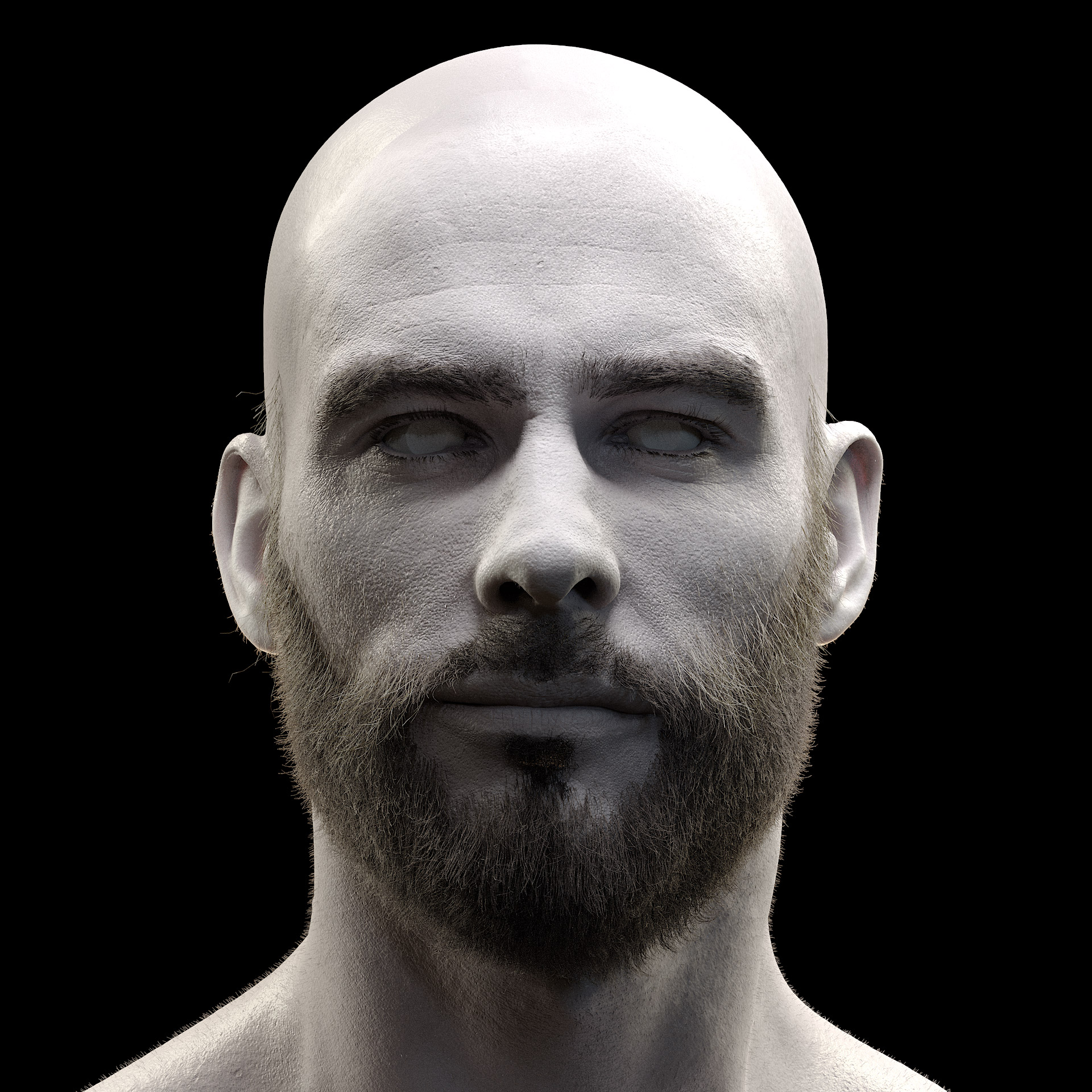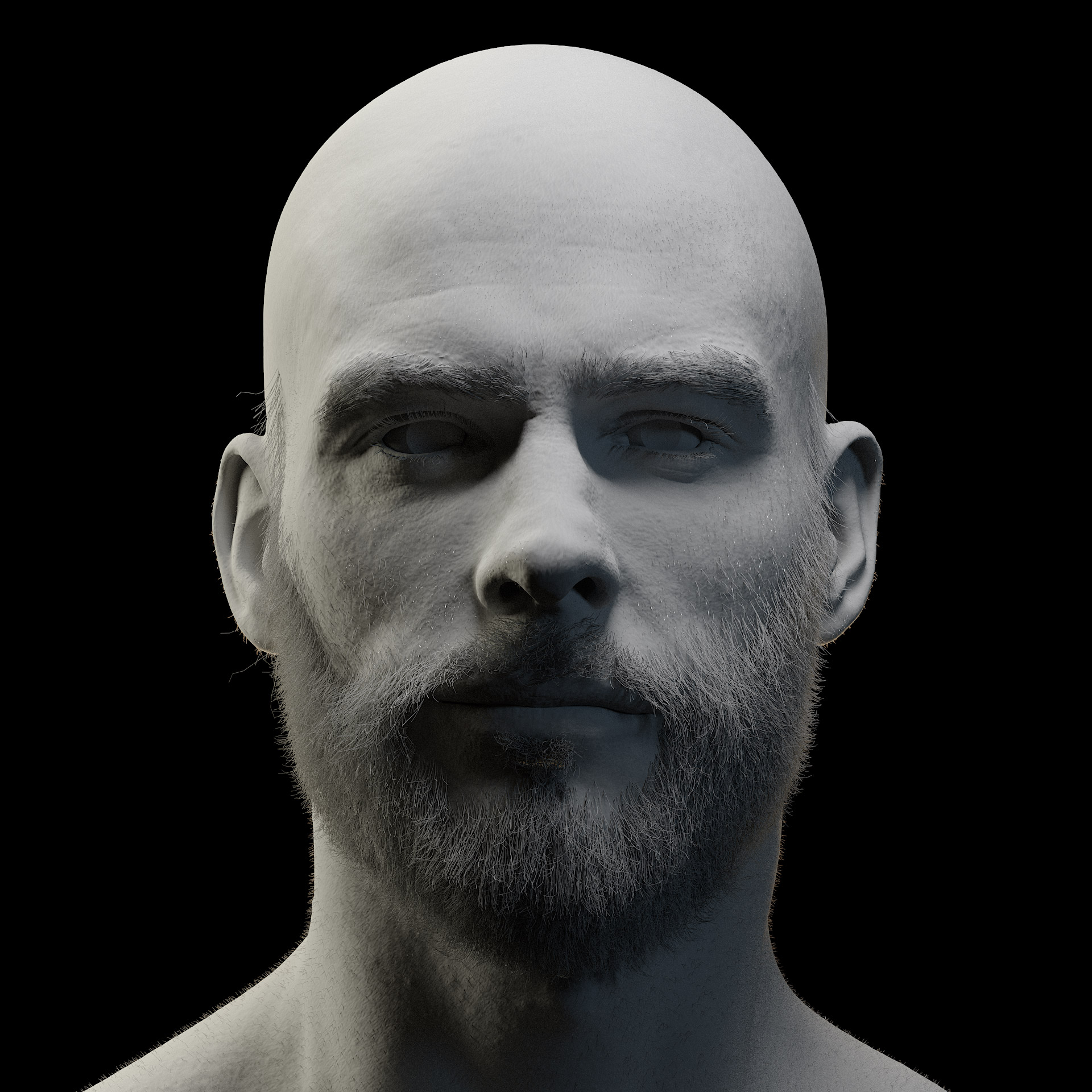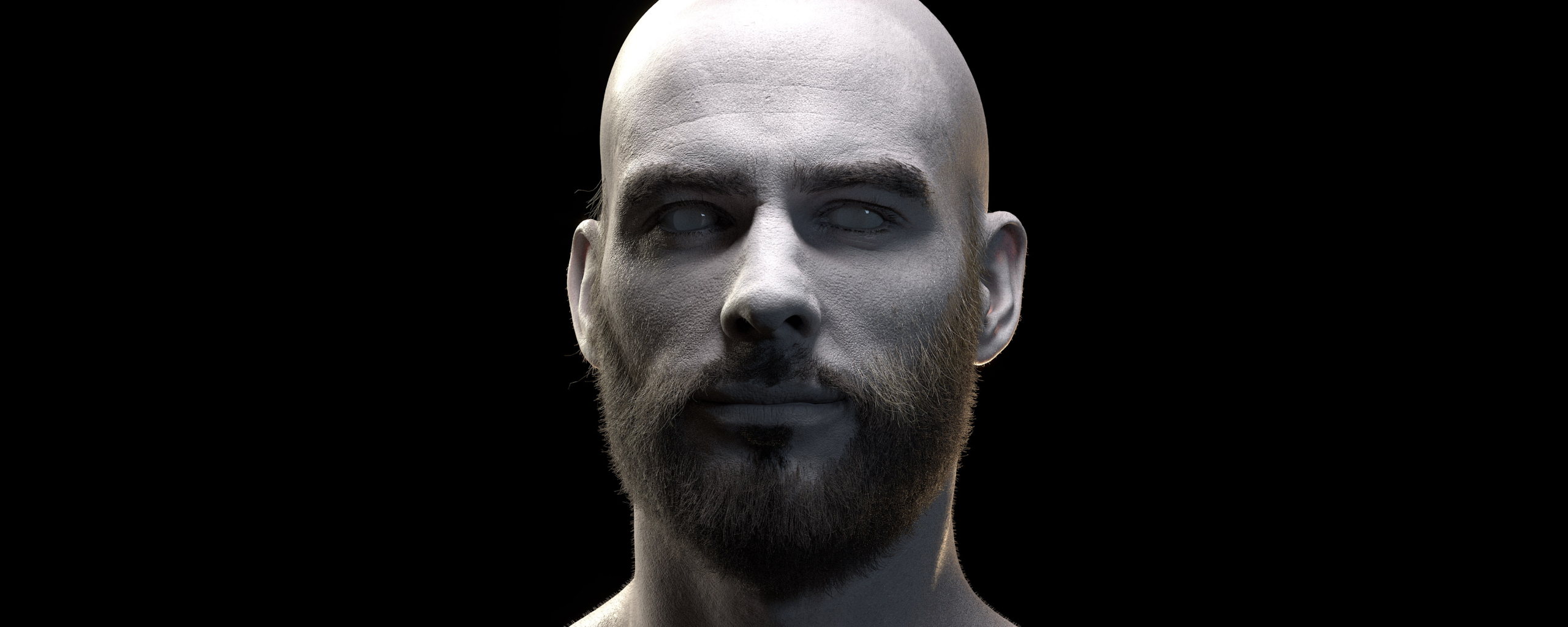Trending →
Digital Humans
Hair & skin
☉ Stage08, July 2018.
☉ Space10, July 2018.
☉ Space10, July 2018.
⎋ Corona→CPU
Cinema 4D
The Film
—0A
D'Atelier made this challenging yet amazing scenes as an R&D project. The challenge was in the use of an all-CG actor. There, d'Atelier was able to create a photorealistic digital skin using displacement and subsurface scattering (SSS) and groom hair on the skin, beard, and eyelids that looked convincingly real.


The Approach
—0B
Visual effects technologies are bringing back past actors such as James Dean to the big screen⏤Controversially so. Artificial Intelligence is the path leading to the unrestrained, magical world of digital actors. AI can replicate all aspects of the physical world, but is it a reality? It's a world where engineering and art are free to coexist. It's a world of people-made wonders. It's all the ways a designer can build the perfect car or the perfect watch. A master smith at work, precise and inspired. From his work comes true freedom, leading the way to this dreamlike world that is transcending. To make this all-CG film look more believable, SD applied principles of cinematography and illumination used the properties of light to make everything look and feel more physical, even the choice of renderer was informed. The latter came handy when it was time to make the caustics effect look more realistic and the SSS more accurate.
The Treatment
—0C
The video was shot in Cinema 4D using a variety of focal lengths, 100 mm, 85mm, 200mm, 50mm. You can feel that there is a strong focus on framing⏤meticulous studied, articulated and yet inviting and suspenseful. D'Atelier groomed the hair on the model in Cinema 4D and rendered it with Corona. The facial expression is controlled with pose morph tags. The realistic skin texture was achieved using a full subsurface scattering shader.
The Rendering
—0D
Corona makes prohibitively expensive effects, such as caustics, a reality in production. One of the pioneering rendering technologies for this film was the new Corona render engine. Its calculating of caustics on very thin geometry, such as through the cornea of the eyes of the 3D male was helpful to make characters' expressions look believable, and required a far lower render time than before.
The Process
—0E
Digital humans are like the holy grail in the visual effects world. Although there are many challenges to the approach, SD planned on using a head scan with tens of thousands of vertices. A dense mesh would help deliver a highly realistic facial animation for the film, but that also meant delayed real-time playback and longer render time. The hair was styled using Cinema 4D out-of-the-box grooming system. The hair tool was used to control hair dynamics, eyebrows and eyelashes in the video.
When it was time to animate the shots, d'Atelier's video reference library served as a valuable tool, however, the character's entire performance was hand-animated, for this method gave him more flexibility and more artistic control. SD first looked into facial capture, but, in the end, because he wanted to tell this narrative with subtle changes, he ended up hand-animating the whole piece. Every detail was important, from the shapes that the model's mouth makes when he talks to the number of folds in his skin.
